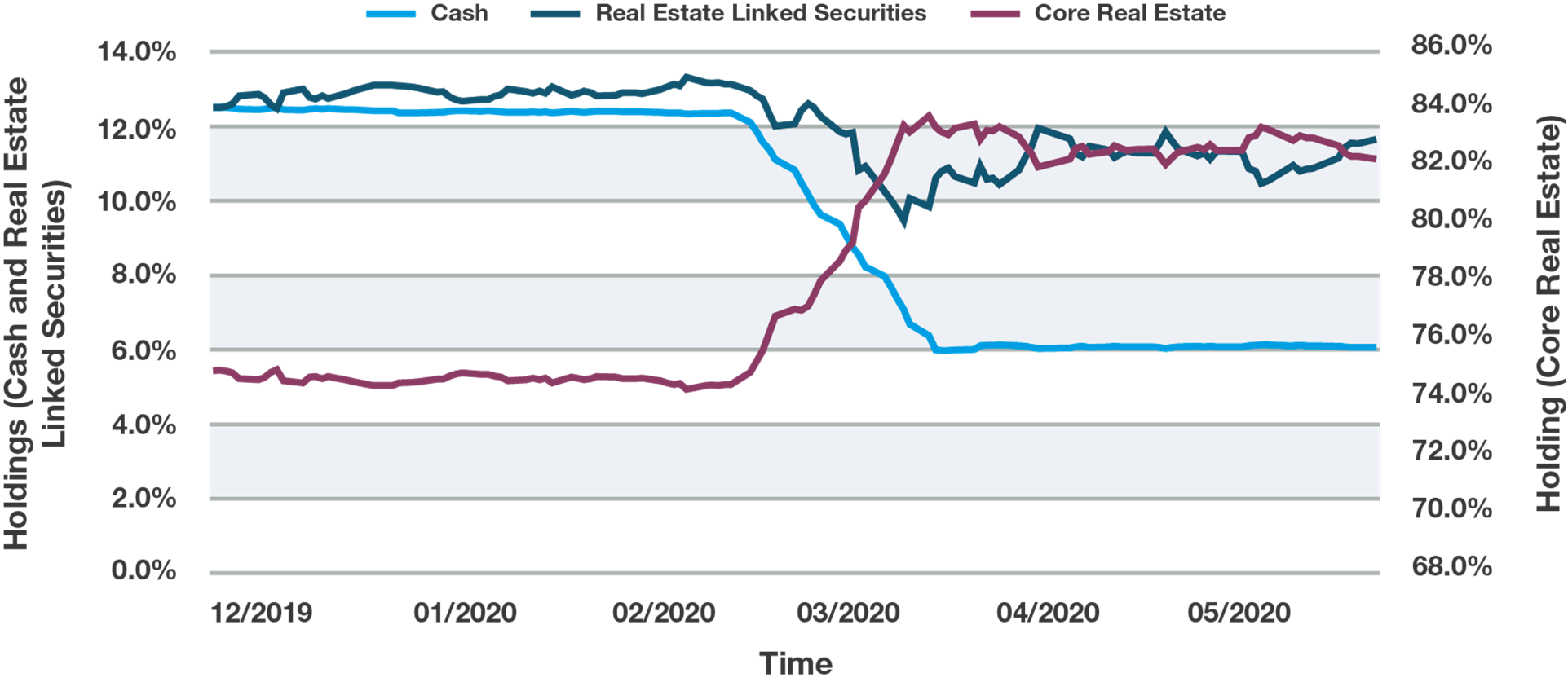- UK Wealth Manager
- 2021
- Strategic Portfolio Design, Real Estate
- GBP3 billion
- UK
- Real Estate Liquidity Design
- Portfolio Solutions
- Strategic Portfolio Design
Our specialist says:
For this project, we sought to use our knowledge of the wider real estate market and our quantitative modelling skills—combined with our understanding of the client’s existing portfolio—to address the challenge of finding an optimal solution. Using a specially developed framework to evaluate available options, we were able to discard less suitable asset classes quickly and spend time on those that would eventually become part of the client’s portfolio. The approach was methodical and robust at each stage, with natural built-in check points to allow the client’s internal team to critique and challenge our findings. The result was a structure that could be implemented in a timely manner and was ready to meet our client’s needs—not just in stable markets, but even in the most extreme economic circumstances.
This UK wealth manager asked for assistance from bfinance to evaluate potential investments in new real estate sub-asset classes or satellite strategies with the aim of improving the efficiency and holistic liquidity management of its real estate portfolio. The wealth manager’s portfolio objectives remained unchanged—as did its aim to ensure greater flexibility to invest in new assets—but it did not want to rely on cash holdings to meet its liquidity needs.
Client-Specific Concerns
The client, a UK-based wealth manager, was exploring ways to manage its real estate portfolio more effectively. The client did not wish to impede the ability of its existing investment managers to execute the core strategy but wanted to evaluate new strategies that could contribute to the overall liquidity of the real estate portfolio. The wealth manager also wanted to ensure that the internal team was governed appropriately in its execution of the core strategy, as well as any additional strategies it sought to implement as a result of the liquidity review.
Outcome
- Refining the existing investment approach: having worked with this client previously, bfinance took the opportunity to help the wealth manager document and clarify its existing real estate mandate to aide in the identification of new asset classes that would be consistent with its overall investment objectives and restrictions.
- Reviewing liquidity requirements: In assessing the client’s liquidity requirements, bfinance conducted an historical review to determine how calls for liquidity had been managed previously, and the willingness of the client’s existing managers to adapt and make funds more readily available. During this process, bfinance also focused on the potential impact of creating a more overtly liquid real estate portfolio on the client’s core investment strategy.
- Identifying potential alternatives: bfinance assessed a range of alternative asset classes utilising a proprietary scoring framework to rank them by key characteristics. The process enabled the team to rapidly discount unsuitable sub asset classes and focus on more favourable options to discuss with the client.
- Mapping the opportunity set: bfinance worked with the client to map the landscape of chosen asset classes, providing insight into overall market dynamics, liquidity, costs, implementation routes, performance forecasts and expected volatility. The team then carried out stress tests to estimate how—in a worst-case scenario—a confluence of heightened liquidity demands and negative returns would impact the existing portfolio structure.
- Designing a new, more liquid portfolio structure: based on the results of its research and analysis, bfinance developed the concept of a ‘liquidity ladder’, whereby short-, medium- and long-term liquidity needs could be met in times of market stress and replenished while still achieving the aims of the broader real estate portfolio. As a last step, bfinance helped the client determine how the new allocations could be put in practice, weighing up regional exposures and active versus passive management to achieve the desired blend of strategies.
Bespoke analysis: Demonstrating the use of a ‘liquidity ladder’ during the COVID-19 market crash (December 2019–May 2020)



 English (Global)
English (Global)  Français (France)
Français (France)  Deutsch (DACH)
Deutsch (DACH)  Italiano (Italia)
Italiano (Italia)  Dutch (Nederlands)
Dutch (Nederlands)  English (Canada)
English (Canada)  French (Canada)
French (Canada) 
